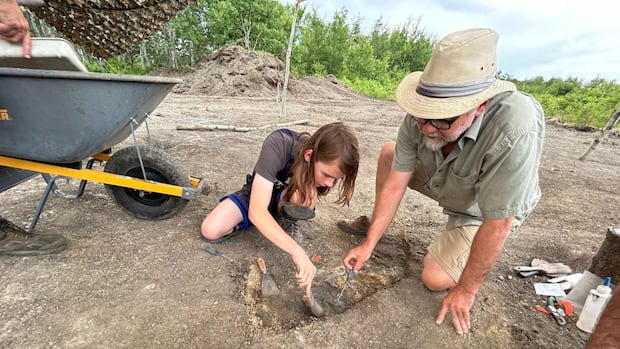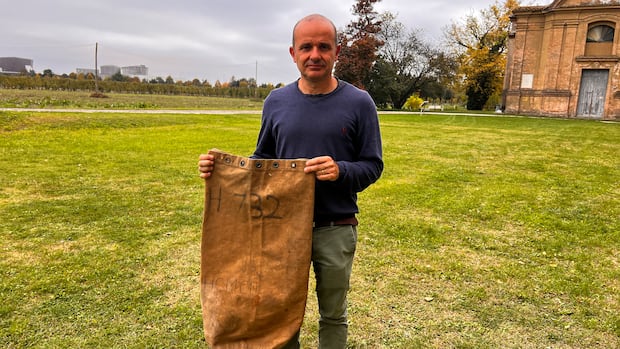Texas teen Walter Campbell wasn’t sure what to make of pointy bits poking through Prairie dirt during a fossil hunt last month with his grandfather in southern Manitoba.
But within moments it was clear to the experts huddled around the pair at the secretive dig site that Campbell, 14, had unearthed teeth and jawbone of a mosasaur — a flipper-footed reptilian predator that hunted inland seas 80 million years ago.
“About six inches or so down, I hit bone,” said Campbell. “I called the guy over and he is like, ‘What is this, I think it might be a mosasaur skull,’ and I was really surprised.”
It’s the third set of mosasaur remains found in just three field seasons at this newer Canadian Fossil Discovery Centre site, where paleontologists and fossil hunters provide guided summer digs to the public.
“It’s probably like the Top 1 exciting thing that’s happened in your life,” Walter’s mother, Angela Campbell, said to him in a recent interview with CBC News. “Yeah. Well, like, other than my birth,” he responded.
Walter and his expat parents were in town from Lorena, just south of Waco, Texas, visiting his grandpa Dave Stobbe in June.
Stobbe bought a couple of dig passes through the fossil centre. Walter is curious about nature and science, and Stobbe thought he might want to take his father or mother along.
“And he picked me, and I’ve got to confess I had a bit of a bad attitude, because here we are outdoors, on my knees, digging in the dirt, hot weather,” said Stobbe, 73, staring over the active dig site this week.
“But he wanted me to come, and I’ll tell you, it was an amazing day.”
WATCH | Texas teen digs up 80-million-year-old mosasaur in Manitoba:
Walter Campbell, 14, has bragging rights unlike pretty much any other teen. He just returned home to Texas from a visit to see his grandfather in Manitoba, where he unearthed skull bones of an 80-million-year-old mosasaur that’s been named after him.
In the weeks since that day, subsequent digs have uncovered limb, vertebrae, hip and skull bones, said Gerry Peters, lab and field technician with the fossil centre in Morden, about 100 kilometres southwest of Winnipeg.
Peters has had the fossil-hunting bug since he was eight years old in the 1970s, when he found his first mosasaur bone.
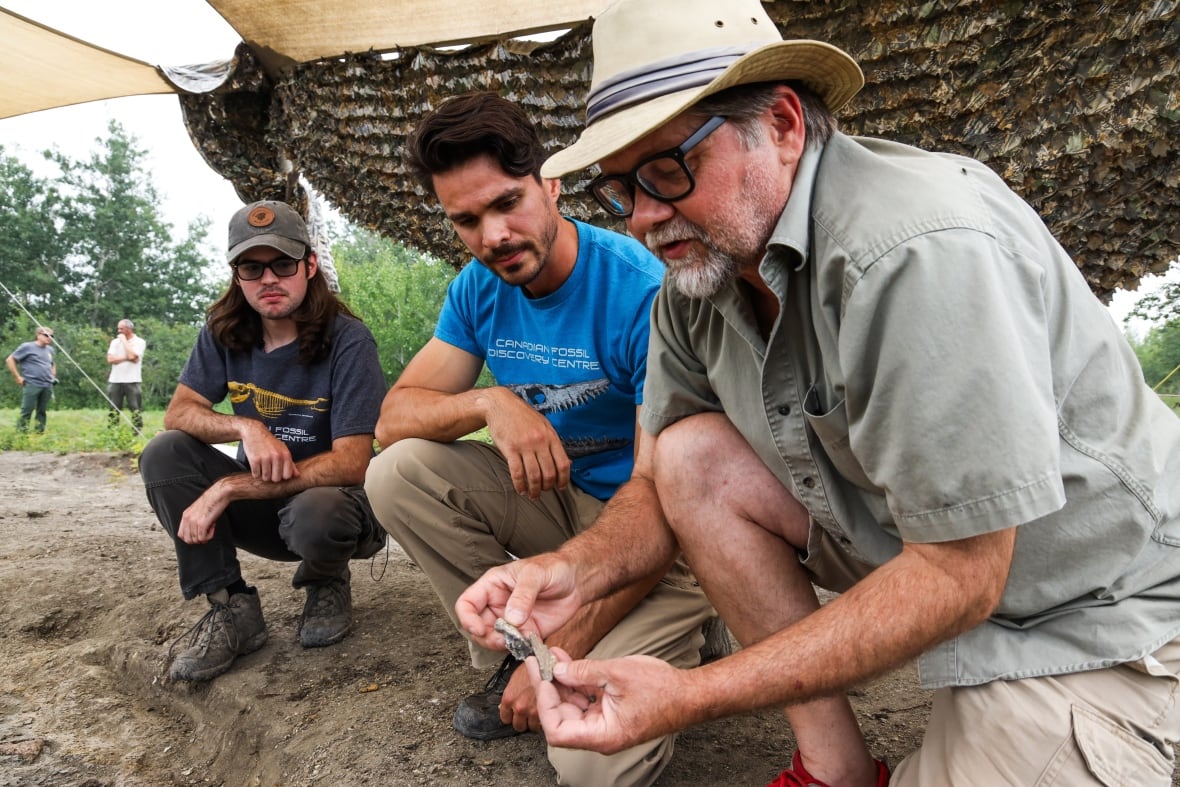
Part of his job is to scout out likely bone beds. He does that by scanning the environment for clues. But it may be more of an art than science, he admits.
“I can’t explain it…. I guess you develop a knack,” said Peters.
That knack guided him to where he directed Walter and his grandfather to dig.
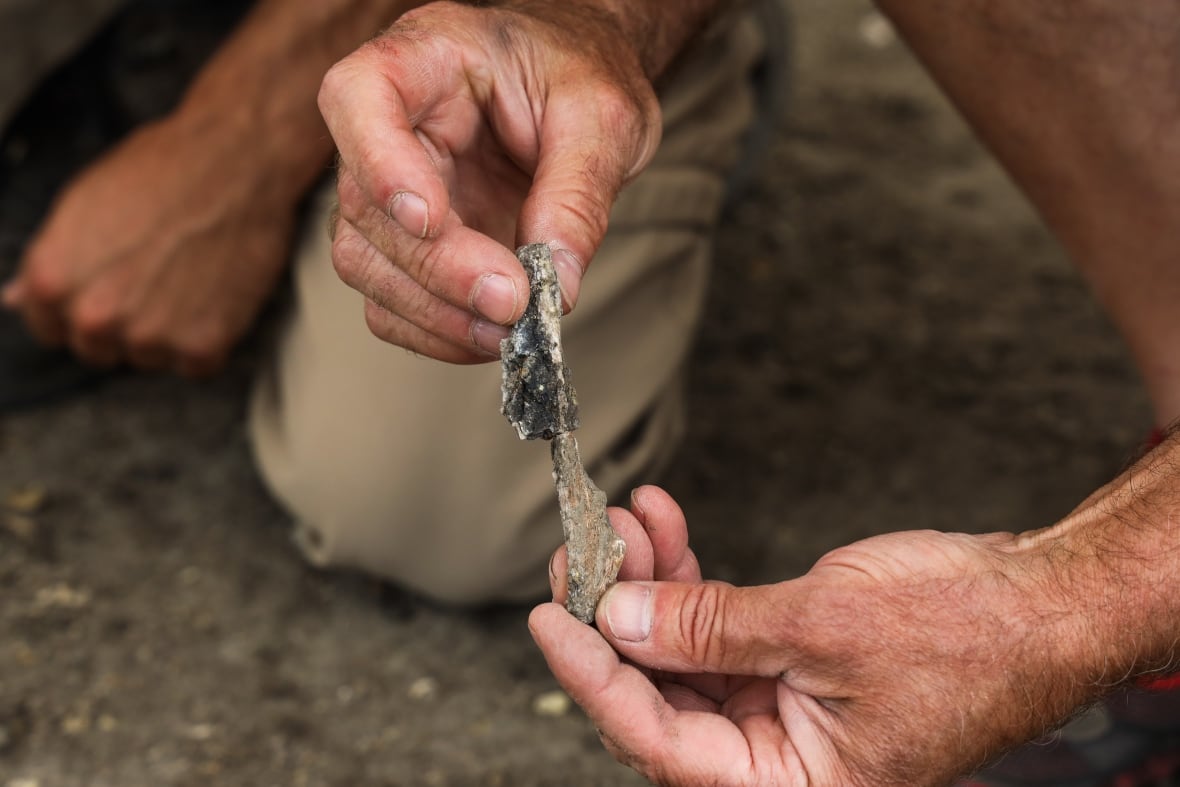
“Everybody got real excited, as you do,” said Peters. “I love watching kids when they find a fossil and they’re taking it out of the ground, you can just see their eyes are lighting up.”
Bruno Costa saw the light in Walter’s eyes that day.
Costa is a PhD student at the University of Manitoba’s earth sciences department studying paleontology and geochemistry.
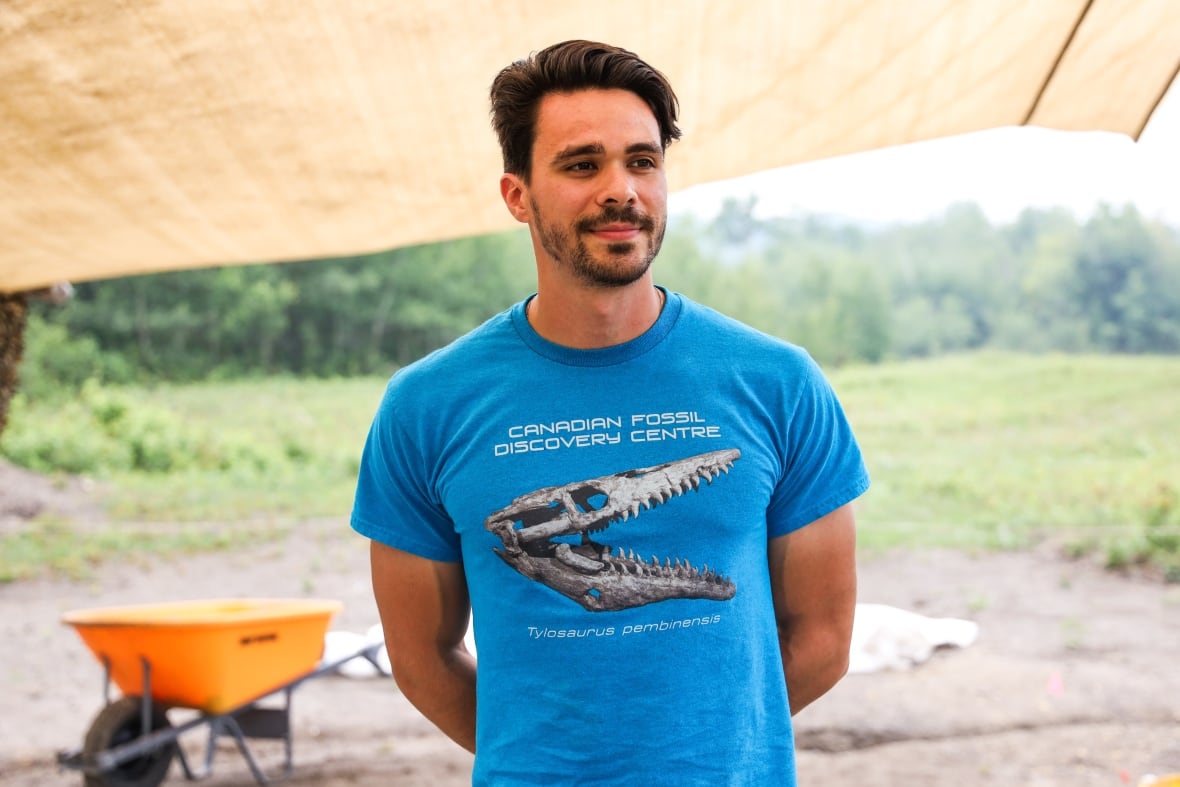
He’s trying to decipher through rock and fossil analysis what life was like for the many marine dinosaurs, birds, sharks, fish, turtles and other creatures of ancient local ecosystems, including along the Manitoba Escarpment.
That ridge of hills and slopes, which extend up through western Manitoba to the Saskatchewan border, are what’s left of the western shores of prehistoric Lake Agassiz.
But the mosasaurs roamed in the late-Cretaceous, long before that giant glacial lake formed 11,500 years ago and drained into Hudson Bay about 3,800 years later.
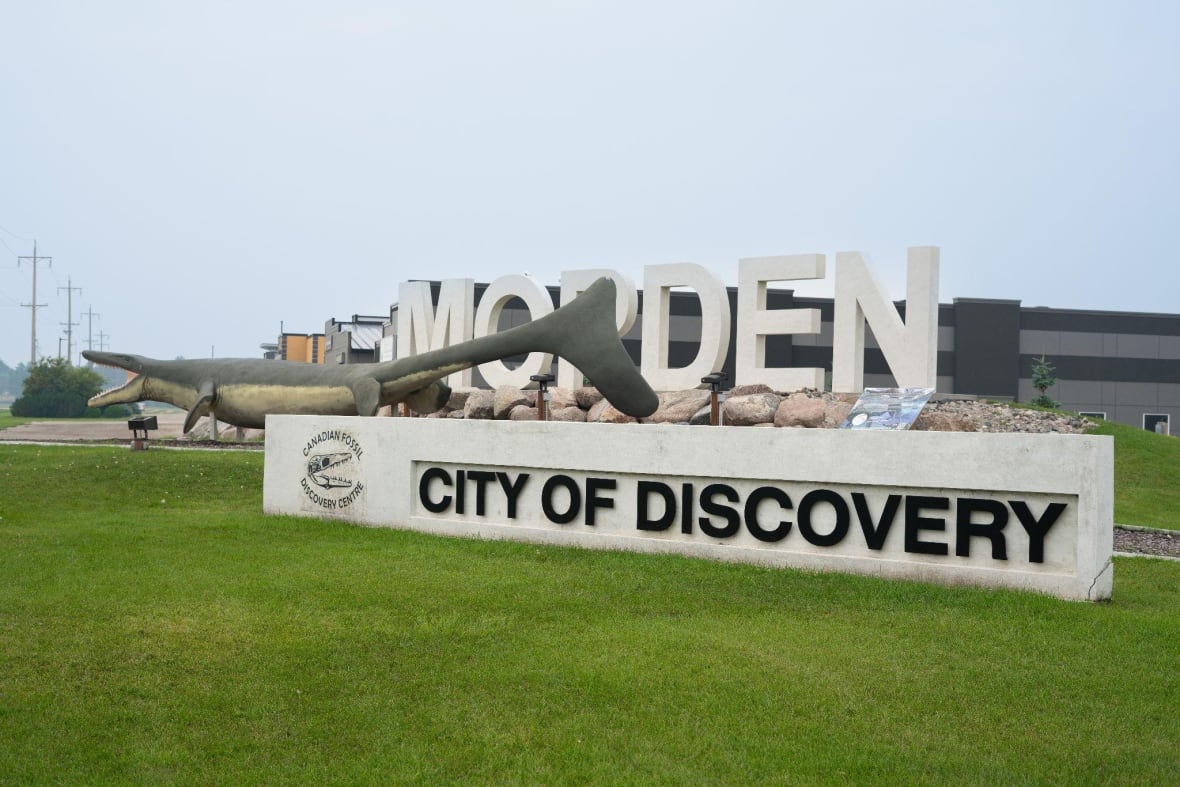
Local fossils from the late-Cretaceous rest beneath 13 layers of sediment and bentonite, a clay that formed from decomposing volcanic ash.
“Manitoba would be completely underwater at this time, 80-ish million years ago,” said Costa.
“It was quite a lush environment for these animals to live in, so picture basically a full-on ocean of probably more than 300 feet in depth for sure at this time…. That’s where ‘Walt’ the mosasaur was living.”
That’s right. Walter now has bragging rights unlike pretty much any teen.
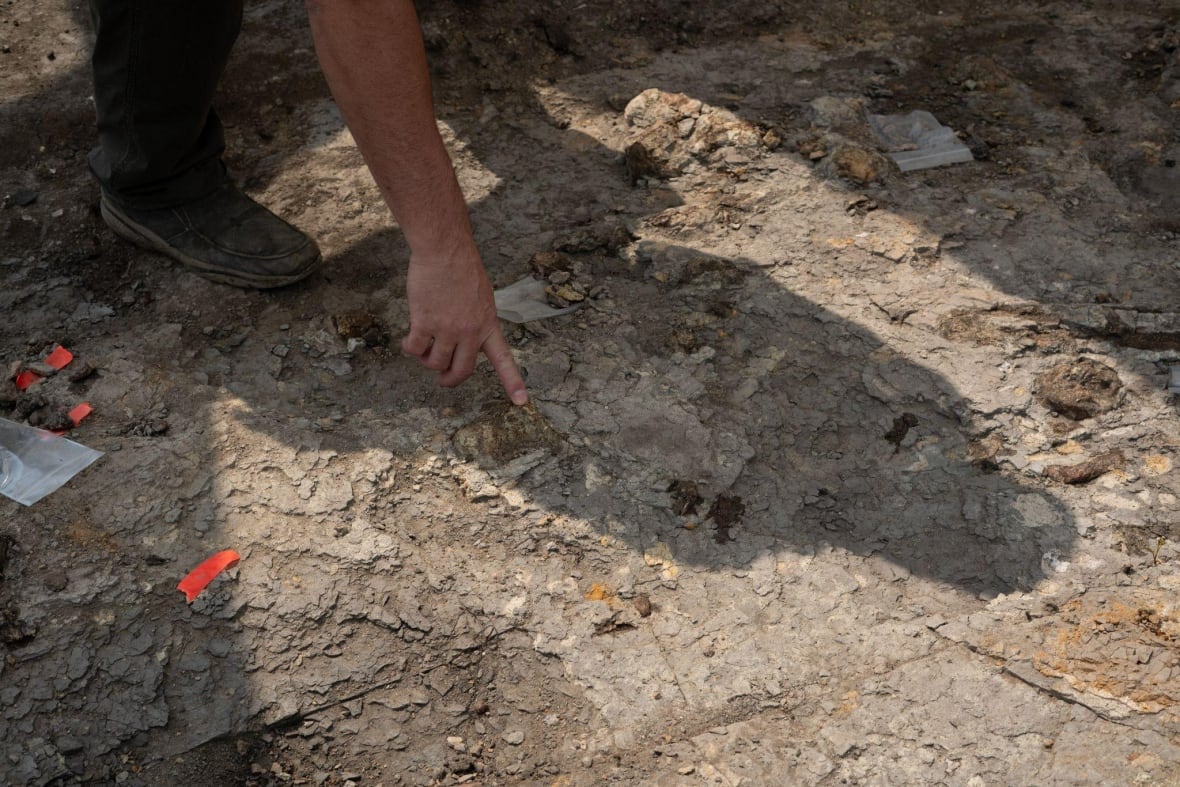
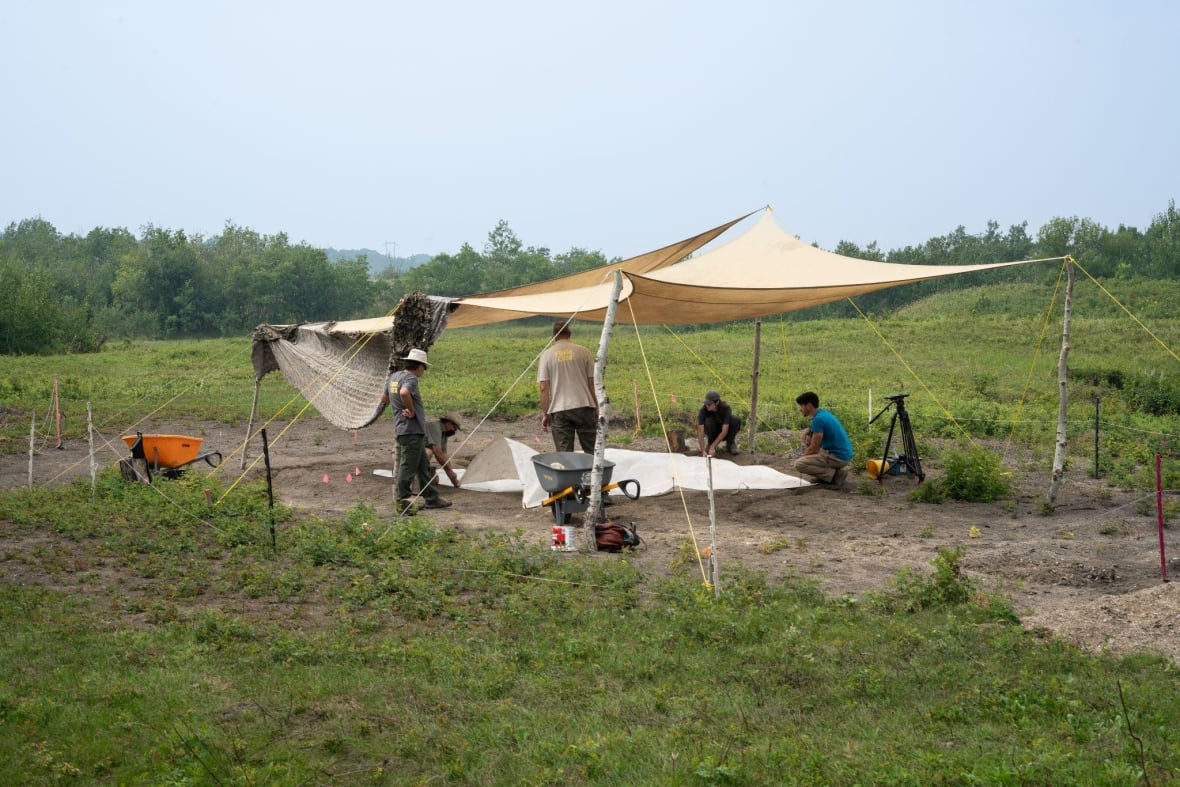
“We always … informally name every specimen and obviously this is going to be Walt, our new mosasaur,” said Adolfo Cuetara, curator for the fossil discovery centre.
It’s a nickname Walter says his grandfather blurted out to the fossil team at the moment of discovery.
“It was a bit spontaneous but it was very exciting,” Walter said. “Now I actually have proof to all of the people at school that I dug up this mosasaur because it was named after me.”
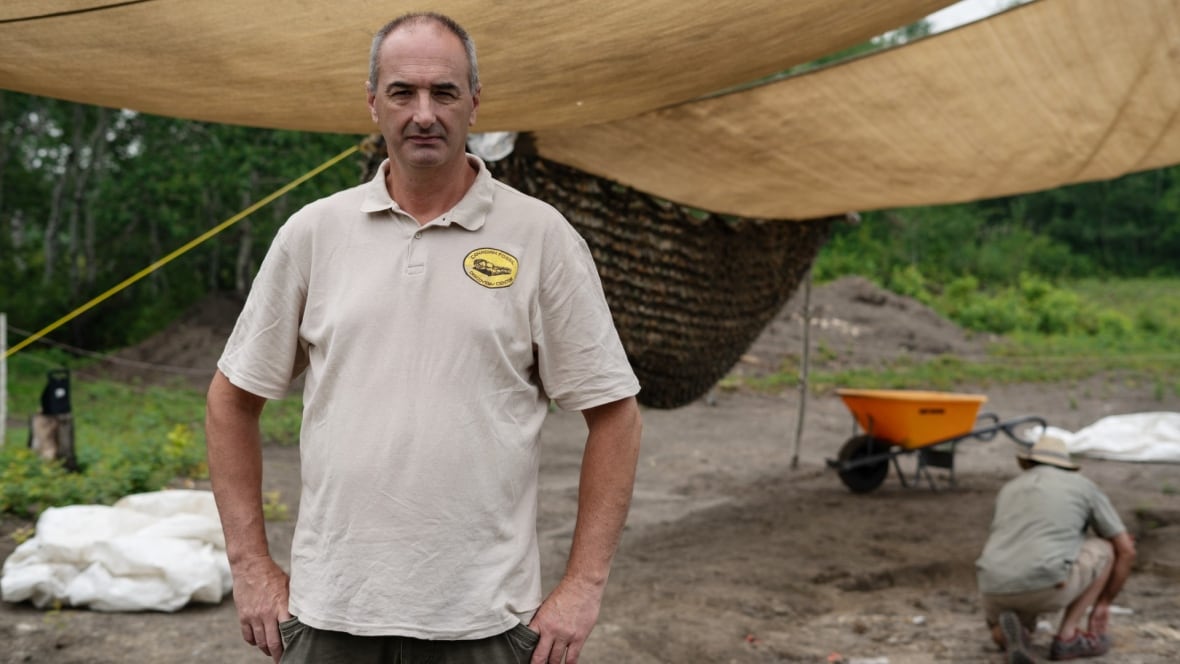
Cuetara said more testing is needed to figure out exactly which species Walt is of three local mosasaur varieties. What is clear is that Walt is not the more gargantuan type the discovery centre has long touted as its mascot.
Bruce the mosasaur — a more than 13-metre-long tylosaur dug up west of Morden in 1974, and Guinness World Record holder for largest mosasaur on public display — might’ve been nearly twice the length of Walt.
Stobbe and his grandson don’t mind if Walt doesn’t rival Bruce’s record.
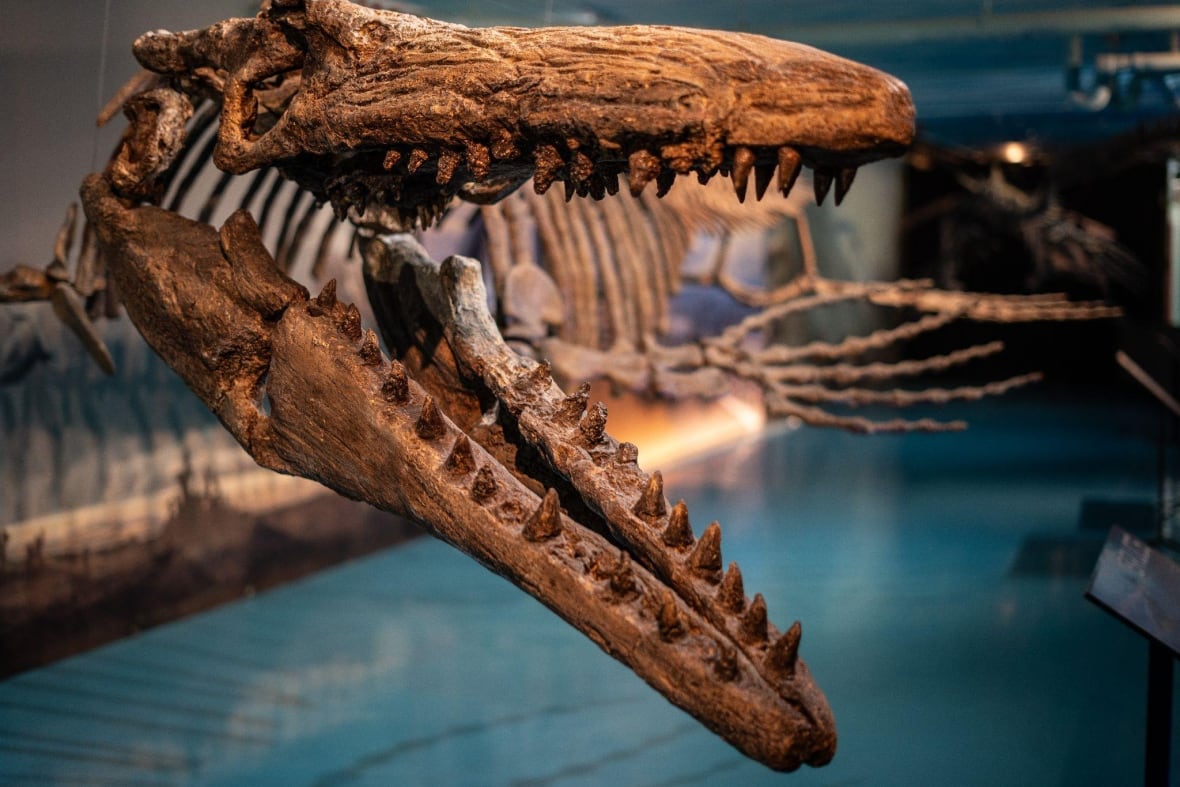
The fossil digs cost about $200 a person, but it was a priceless experience for the grandfather-grandson duo.
“There’s so many things you can spend money on with your grandsons. Go to a Winnipeg Jets game. Or go to Disney world and ride rides. But right in my back yard I’ve got paleontologists who give a grandpa and his grandson a hands-on experience. That was pretty special.”


